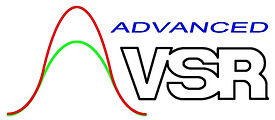
It is hard to find a milling machine worth anything these days, that does not have a brushless motor in its spindle. Brushless motor technology has also revolutionized other industries, from electric cars and trains to hand power tools.
We are the only builder of vibratory stress relief equipment in North America that uses brushless motors, which we use exclusively. Why use anything else ?
Learn more on our Equipment Comparison page.


During the early 1980'2, if was found that the VSR Process can cause changes in the resonance patterns of a "live" structure. . . . . providing the setup (cushion placement, vibrator and sensor locales and orientations, vibrator unbalance setting) is correct. This requires exacting instrumentation. The actual speed of the vibrator must not differ from the command setting on the controls. Which is why we use brushless, spindle-grade motors and precision motor drives.
So what changes within the structure that could cause such changes ?
Resonance formulas contain a number of factors, most of which are constant for a given structure. One exception is the damping, which is the internal friction that resists vibration. Our instrumentation is highly repeatable, and has shown over a course of decades of using the VSR Process that there are two major changes in a resonance pattern of a "live" structure that occur during effective stress relief :
1. For most structures the greatest change in resonance peak growth, an example of which is shown on the right ---->>>
Green is the original resonance of this workpiece, a 5 inch diameter Inconel bar that was being prepared for full length gun drilling, roughly 15 feet. (We use green, like a "green" casting, i.e., freshly poured, and likely full of stress.)
During ~ 10 minutes of driving each peak, these occurring at 6541 & 7208 RPM, they exhibited peak growth of 61% for the larger peak, that max'd out at 16.8 g's, and 33% for the shorter peak, that grew to 12.8 g's. Red is used for the Post-Treatment Scan, which shows very little peak shifting. Stability of the resonance pattern occurred in less than 20 minutes.
2. Peak shifting is the other common change, and at times occurs without any or very little peak growth, shown in the middle graphic on the right. Keep in mind that as a peak shifts to lower speed, the output of the vibrator is also reducing, but at a faster rate : Output force of a rotary eccentric vibrator is proportional to the square of the speed (or frequency). So a shifting peak that maintains the same amplitude is actually an indication of peak growth, and would be displayed as such, if the vibrator's output force was constant, i.e., not effected by speed.
But it is very common for BOTH peak growth AND peak shifting to occur, with peak growth being often the greatest change, percentage-wise, as shown here -- >>>>>>>>



What was not clear during the early days of the VSR Process, or if using primitive equipment, is the connection between these two changes. In actuality, they are looking at the same phenomenon, from two different perspectives, static (on the left) and dynamic (on the right).
Here is an actual example: A VSR Chart of a 125 ton capacity lifting yoke, click the dark button to see or download the report showing how this chart was made.
